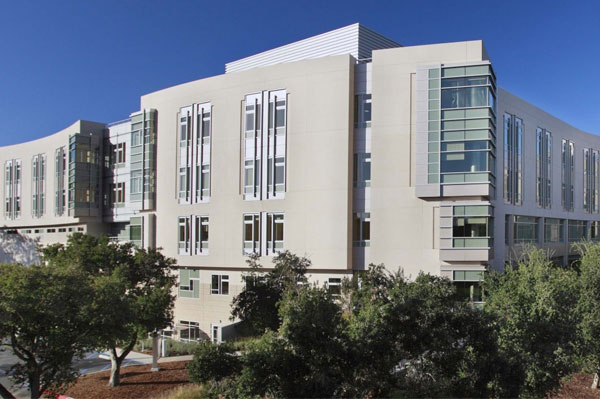

Objective
Configure technologies in new ways. Aggregated technology so that everything is tied to one network. The entire building exists on automation.
Benefit
- Has nurses spend more time at the patient’s bedside, instead of running back and forth between the nurses’ station.
- Entire staff uses a personal communication system from Vocera, a physician, wants to speak to a nurse caring for a specific patient, he or she can say the patient’s name, and the nurse will receive the call.
Major Challenges
Materials used in the construction of large buildings degrade and distort radio frequency signals.
Silicon Valley’s new El Camino Hospital aggregates technologies
through ubiquitous wireless to transform patient care capabilities.
We hear the term more frequently these days, but what constitutes the “smart hospital” in your mind?
We wanted the hospital building to be “technology-aware.” We really don’t have any technology here that you can’t find somewhere else in the world, but we certainly have a great number of technologies and we’ve done some unique things by aggregating the systems. We have configured technologies in new ways. We have aggregated technology so that everything is tied to our network. Our entire building exists on automation.
You describe it as a facility that “knows” patients very well. What do you mean by that?
At El Camino, when a patient registers, he/she puts a hand on a device, which then takes ultrasound images of his/her vein pattern. Patients realize that we’re utilizing biometrics to know them well and appreciate the fact that we can utilize technology to be more efficient and help reduce incidents like identity theft. Another example is that our 167 wireless robotic medication-administration units throughout the hospital “know” which patients get which drugs or supplies - as well as which caregiver issued the drugs since administration also requires a biometric sign-on. Generally, the hospital is smart because technology enables us to know the location of all drugs/supplies, whether they’re stored in the transportation robots, the dispensing units or in the patient’s room.
What were the essential elements to making the smart hospital a reality?
Our network was one of the most advanced that state inspectors had seen to date. It connects everything using a combination of wired and wireless technologies, including full Voice over Internet Protocol. Clusters of servers run the building: environmental systems for air conditioning and heat; elevators; security; fire detection; and systems that manage video and lighting. Even the plumbing system is networked.
In addition, we installed a distributed antenna system from Black Box (BBOX) to give us wireless coverage in every location within the building, including delivering full medical-grade support for Cisco Wi-Fi, Philips WMTS, At&t cellular, and 2-way radios. We established high signal penetration with thorough RF engineered coverage patterns with the ability to locate RFID tags within a square meter or less.
How has the smart hospital impacted caregivers?
Part of our new care model yielded computers in each room. The concept is to have nurses spend more time at the patient’s bedside, instead of running back and forth between the nurses’ station. It’s changing the way nurses are practicing, and they’re excited about the new model. Today, our entire staff uses a personal communication system from Vocera. It is installed and integrated with the beds, our electronic bed-board, nurse-staffing and nurse-call systems. If someone from outside, such as a physician, wants to speak to a nurse caring for a specific patient, he or she can say the patient’s name, and the nurse will receive the call, wherever the nurse is in the building. This communication system also works well for the patient who can speak to his/her nurse or hospitalist regardless of their physical location.

